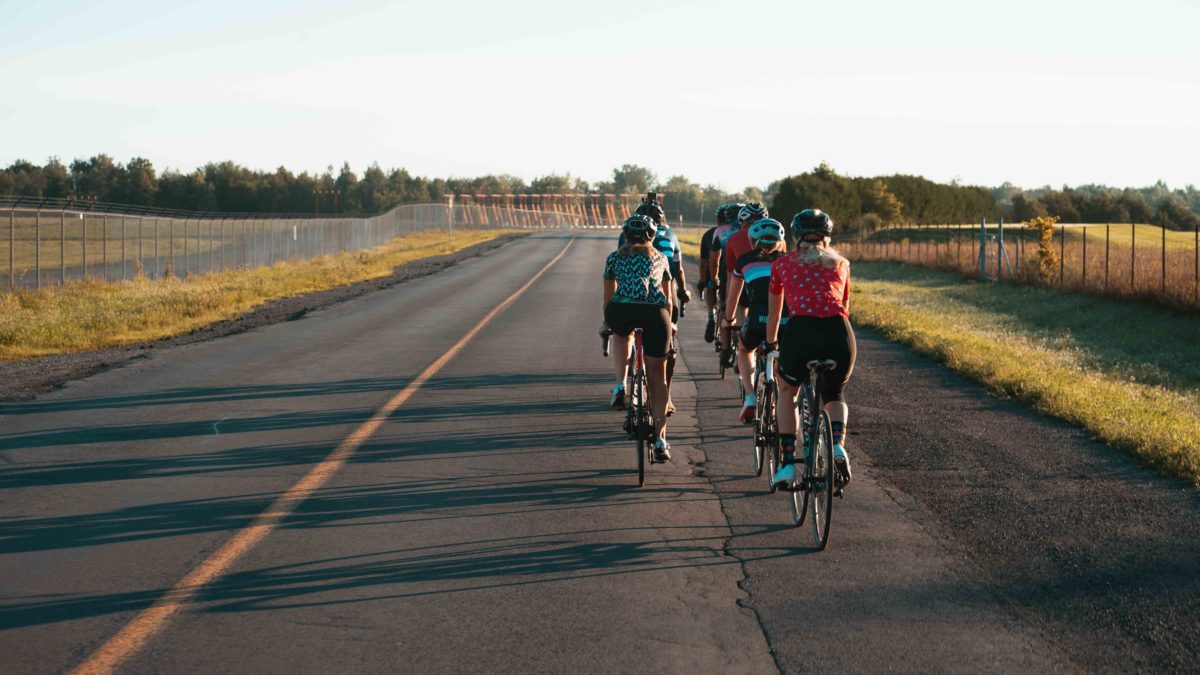How to train for your first 100-km ride
Riding a metric century is easier than you think
 Photo by:
Pablo Vallejo/Unsplash
Photo by:
Pablo Vallejo/Unsplash
A 100-km ride is an impressive landmark that many new cyclists aspire to reach. Some try accomplish their first century during an event (such as the Rapha Women’s 100) while others simply have it as a personal distance goal. Whether you choose to ride it alone, with friends or during an event, your first 100 km is more within reach than you think.
Here are a few tips to get you ready for your longest ride yet.
Building up
Hitting 100 km is extremely straightforward when you think of it as just adding a few kilometres every time you ride. The reality of training is a little bit more complicated, but, to simplify, you should be building up distance gradually over time.
Try to get out three to four times a week on your bike. Not every ride has to be long, but consistent riding will build your fitness and get your body prepped for a big day on the bike. Try and get in at least one longer ride per week (weekends are good for this) and increase the distance of this ride by about five to 10 km every week.
If you’re gradually increasing your distances, you’ll quickly get to know your body’s fitness limitations. If you rode 55 km and felt fine by the end of it, try bumping up the distance to 70 kilometres the next week. With regular riding and gradual distance increases, the jump from 70 km to 100 km will feel challenging but very doable.
Plan your route
You’ve done the training and you’re ready for the 100-km ride. Where will you do it? If your ride is part of an event, the location is probably already selected ahead of time, so you won’t need to do much thinking.
For those making their own plans, an easy way to find a route is to look at places you ride regularly, and see if you can extend the ride a bit to add more distance. The familiarity of the roads can help the ride go by faster, and if you’re tired by the end of it you won’t have to think too much about where to turn.
RELATED: 8 apps for planning your cycling adventure
While you’re planning, make sure you give yourself options to stop and refill your water bottles, or grab a snack.
Finally, it’s important to look at how hilly the route will be. One hundred kilometres with 1,500 m of elevation will be much more challenging than a flatter route.
Pack correctly
As you increase your ride distances, you’ll start to notice the importance of eating during your rides. If you want to avoid an energy crash (‘bonking’), it’s vital that you bring food to give your body the fuel it need to get you home.
It’s easy to not feel hungry during exercise, so your training rides are a good time to practice eating on the bike. These rides are also great for figuring out what kind nutrition works best for you—it’s never a good idea to try a new type of food the day of a big ride.
RELATED:Breaking down the saddle bag: What to bring on a ride and how to carry it
You’ll also need water, emergency cash, a flat kit and you’ll probably want to think about sunblock.
Check your bike’s tire pressure, drive chain and brakes before you head out for the ride. Being unprepared for a mechanical issue becomes much more of a hinderance the farther you are from home. It’s better to be over-prepared with tools and pre-ride bike checks than stuck on the side of a country road waiting for an Uber XL.
Once you have your training, route and bike all set up, the last stage is to get out on the road and do the ride itself. Promise yourself a treat at the end of the ride (ice cream, perhaps?)—you deserve it!
